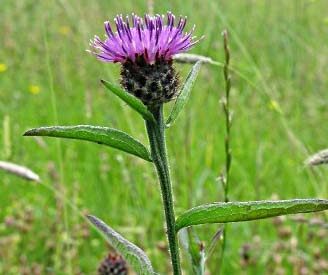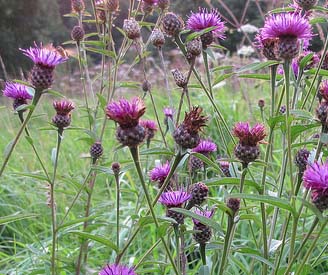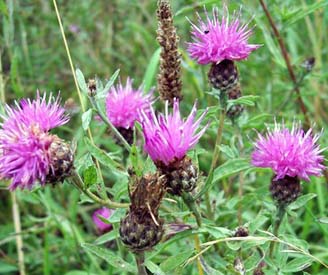Black Knapweed
Centaurea moncktonii
Description
Grows from a woody crown and can reach up to 3.5 ft. Lower leaves are long-stalked, upper leaves have no stalk. Stems are many-branched and tipped by a solitary flower head up to 1 in. wide. The leaves are coarse and tough. Flower heads are pink to reddish purple, oval or globe-shaped. Key identifying feature is the fringed bracts on the flower head.
Habitat
Favors moist roadsides, sand/gravel bars, river banks, pastures, moist meadows, and forest openings.
Location in Nebraska
Reported in only a few counties in East and Central Nebraska.
Pathway of Introduction and Spread
May have been introduced from Europe for forage, but it is not palatable and has low nutritional value. Escaped cultivation and is proliferating rapidly in the Pacific Northwest. Seed is the predominant means of reproduction although can also be propagated by root crown fragments.
Impacts
Out-competes other plants in pastures, hayfields, meadows, riparian areas, forest margins, and right-sof-way. This can result in reduced forage, wildlife habitat, and species diversity. A similar weed species, spotted knapweed, is abundant and can hybridize with meadow knapweed, if the species co-exist.


